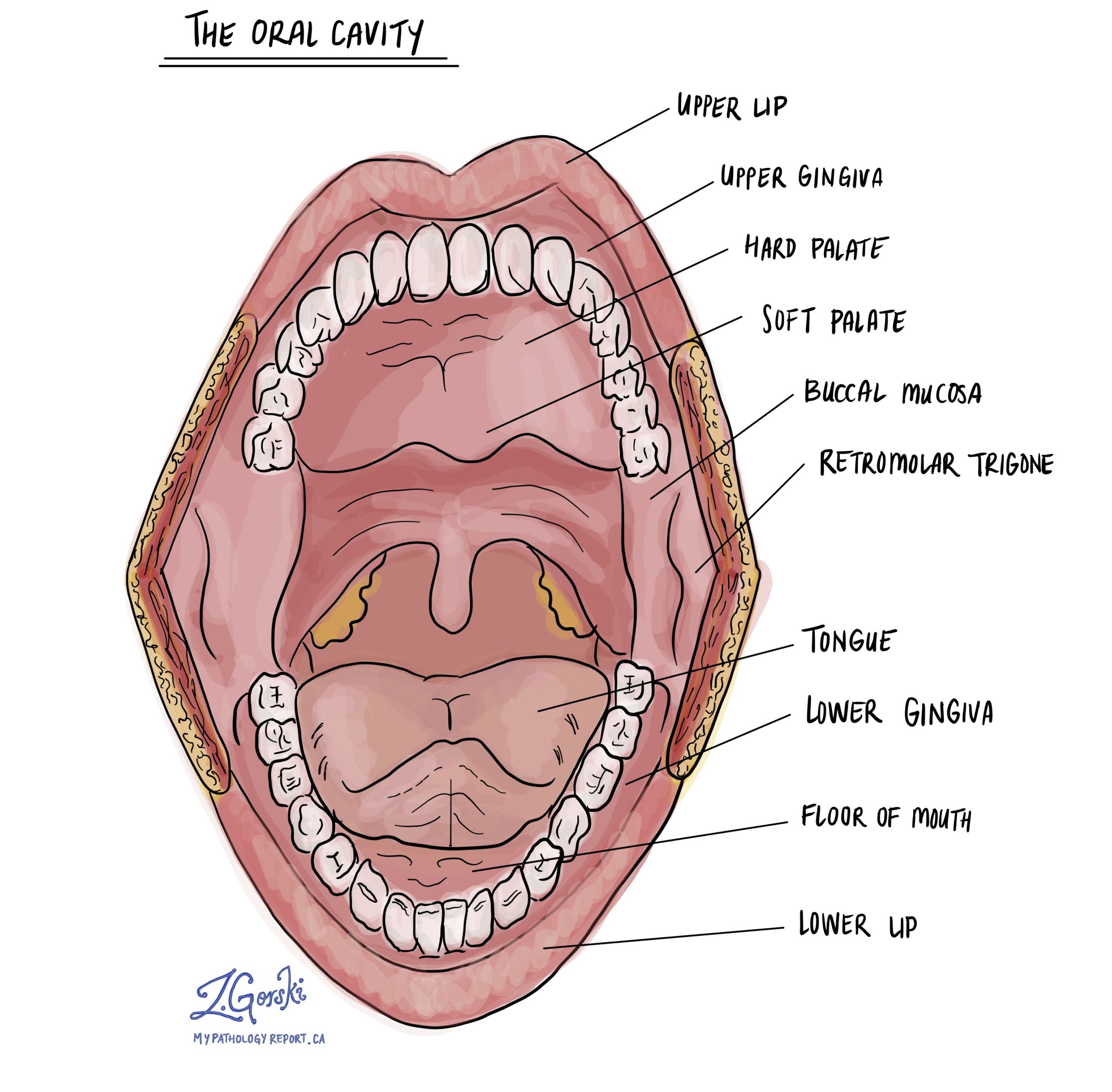by Jason Wasserman MD PhD FRCPC
July 17, 2024
Background:
Acute mucositis means inflammation of the tissue covering the inside surface of the oral cavity, which includes the lips, tongue, buccal mucosa (cheeks), gingiva (gums), floor of the mouth, and palate. The tissue covering the inside of the oral cavity is called mucosa, and acute means that the inflammation is active or ongoing. Another name for this condition is stomatitis.

What causes acute mucositis in the oral cavity?
Common causes of acute mucositis include:
- Radiation therapy: When radiation therapy is used to treat head and neck cancers, the radiation can cause damage to the oral tissues, leading to mucositis.
- Chemotherapy: Certain chemotherapy drugs can directly damage the oral mucosa, causing mucositis. The severity and occurrence of mucositis can vary depending on the specific drugs used and the individual’s susceptibility.
- Stem cell transplantation: Before a stem cell transplantation, high-dose chemotherapy or total body irradiation may be given to destroy cancer cells or suppress the immune system. These treatments can cause severe mucositis.
- Infection: Acute mucositis may be caused by viral, bacterial, or fungal infections in the mouth. The most common virus that infects the mouth is the herpes simplex virus (HSV), while the most common fungus is Candida. These infections can irritate and inflame the mucous membranes, leading to mucositis.
- Trauma or injury: Trauma to the oral cavity, such as burns from hot foods or liquids, poorly fitting dental implants, or dental procedures, can cause acute mucositis.
What are the symptoms of acute mucositis in the oral cavity?
Symptoms of mucositis include red or white patches in the mouth, pain, bleeding, and ulceration.
How is this diagnosis made?
The diagnosis of mucositis is typically made after your oral cavity is examined by your doctor a small sample of tissue is sent to a pathologist for examination under the microscope.
Microscopic features of acute mucositis
The inside of the oral cavity is covered by a thin layer of tissue called mucosa. The surface of the mucosa is lined by specialized squamous cells, which form a barrier called the epithelium. The epithelium sits on a type of connective tissue called the lamina propria. In acute mucositis, immune cells called neutrophils are typically seen in the epithelium and in the lamina propria. The squamous cells in the epithelium often show a change that pathologists describe as reactive atypia. This means that the cells look abnormal but are non-cancerous. When an infection causes the condition, microorganisms such as fungi may be seen on or within the epithelium. A special test called immunohistochemistry may also be performed to help identify viruses such as herpes simplex virus (HSV).
About this article
Doctors wrote this article to help you read and understand your pathology report. If you have any questions, please contact us.



